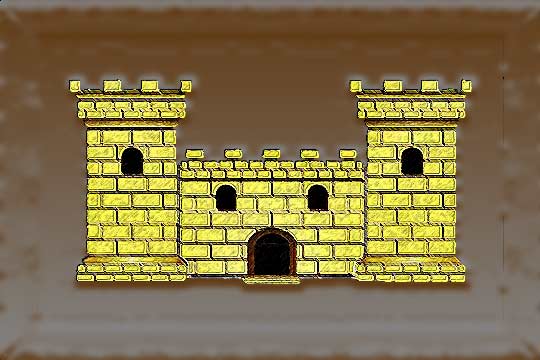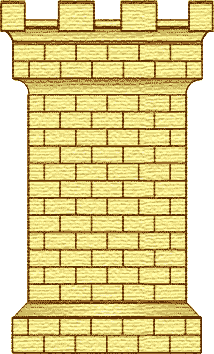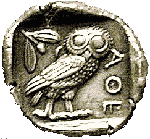Arkadiko, Epidaurus, Argolis,Peloponnese
Acropolis of Kazarma
| Location: |
| On a hill at the 15th km of the road Nafplion-Epidavros |
| Region > Prefecture: |  |
| Peloponnese Argolis | |
| Municipality > Town: | |
| City of Epidaurus • Arkadiko | |
| Altitude: | |
|
Elevation ≈ 300 m (Relative Height≈80 m) |
| Time of Construction | Origin | |
| Various periods | ANCIENT |
|
| Castle Type | Condition | |
| Ancient City |
Rather Poor
|
One of the most important archaeological monuments in Argolis is the Acropolis of Kazarma. It is located at the southwestern foot of mount Arachnaion, approximately halfway between Nafplio and Ligouri (15th km), near the village of Arkadiko.
This is an ancient castle that was used later by both the Byzantines and the Franks.
The Name of the Castle
“Kazarma” means fortress (in Venetian) and is the old name of a nearby settlement. The “acropolis” is used because of the obvious ancient origin of the fort.
The castle has been identified with Xerokastelli which is mentioned in the list of Frankish castles of 1377 as Sorcastelli and of the Venetian list of 1467 as Sero Castellia. The list of 1467 notes it as destroyed.
The identification with Xerokastelli was first proposed by Buchon (1843). It is not absolutely certain, but it is the most likely.
One detail in favor of the identification with Xerokastelli is that this castle is the closest to the Monastery of Karakalas, which is located 3.5 km to the NW. The old name of the monastery was Monastery of Xerokastelli (which the Turks translated into Karakoule, from which the modern “Karakalas” came).
History
The Acropolis of Kazarma is a relatively small fortification located on the ancient Argos - Nafplio - Epidaurus road. According to one hypothesis, it was built by the Argives to oversee the borders of the ancient city-states of Argos and Epidaurus.
However, it is very likely that it was not a simple fortress, but an ancient town. It has been proposed to identify Kazarma with ancient Lissa, which according to Pausanias existed at the foot of Arachnaion.
The castle was also used by the Byzantines, since there are traces of reconstruction during the Middle Byzantine Period. It was also used by the Franks who strengthened the fortifications and added buildings.
Throughout the Frankish period, Xerokasteli belonged to the Castellania of Corinth and not to Nafplio (which is much closer). From the beginning of the 13th century, with the beginning of the Frankish period, it belonged to Othon de La Roche, Duke of Athens.
In 1358 the castle was given to Nicolo Acciaiuoli, a nobleman from Florence, who in 1338-1340 had served as governor of the Principality of Achaea. He later became Gran Seniscalco of the Kingdom of Naples. Acciaiuoli had helped Robert of Taranto and his mother Catherine of Valois to consolidate their power in the principality. As a reward for his services, he received fiefs in Messinia (in 1338) and later, in 1358, the Castellany of Corinth with 8 castles including Xerokastelli.
After Acciaiuoli’s death, the Castellany passed in 1371 to his nephew Nerio, who in 1385 became Duke of Athens. From the late 14th century the castle was under the control of the Byzantines of Mystras, until the conquest of the region by the Ottomans in 1458.
It was not used during the Ottoman occupation, as far as we know.
Structure, Fortification & Buildings
The castle covers an area of almost 4,000 sq.m. within a perimeter of 275 meters.
The walls (with a width of 2.50 m. and a maximum surviving height of 5.20 m.) are constructed with the polygonal system and date back to around the 4th century BC.
The fortress has 4 round towers, one of which was converted into a rectangular one. The main gate is located at the southwest end, near one of the towers. There is also a small secondary gate on the eastern side.
In addition to the northeastern round tower where a rectangular medieval extension measuring 4.90✖2.50m has been added, in many other parts of the walls there are also additions on the ancient walls, with later stonework made of semi-finished smaller stones.
It should be noted that in the same area there is also the Mycenaean bridge, known as the “Arcadian Bridge” or the “Kazarma Bridge”, which is considered the oldest preserved bridge in Europe.
| First entry in Kastrologos: | May 2013 | Last update of info and text: | March 2025 | Last addition of photo/video: | March 2025 |
Sources
- Website Ancient Greece -Ακρόπολη Καζάρμας
- Antoine Bon, 1969, La Morée franque. Recherches historiques, topographiques et archéologiques sur la principauté d'Achaïe (1205-1430), Editions de Boccard, pp.485
- Ιωάννης Ε. Πέππας, «Μεσαιωνικές σελίδες της Αργολίδος, Αρκαδίας, Κορινθίας, Αττικής», Αθήνα 1990, σελ.273-274
- Φωτογραφίες 1,2,3,5,11,12,13,14 έστειλε ο Δημήτριος Περσέας Λουκίσσας και πληροφορίες από το βιβλίο του «ΑΡΓΟΛΙΔΑΣ, ΚΟΡΙΝΘΙΑΣ ΠΕΡΙΗΓΗΣΙΣ», τόμος Γ’, Ανοιχτή Πόλη, Αθήνα, 2024, σελ.270-274
|
|
| Access |
|---|
| Approach to the monument: |
| The hill can be accessed from Nafplio after a few minutes drive (15 km). |
| Entrance: |
| The castle is accessible from the eastern side reached via a dirt road |


















